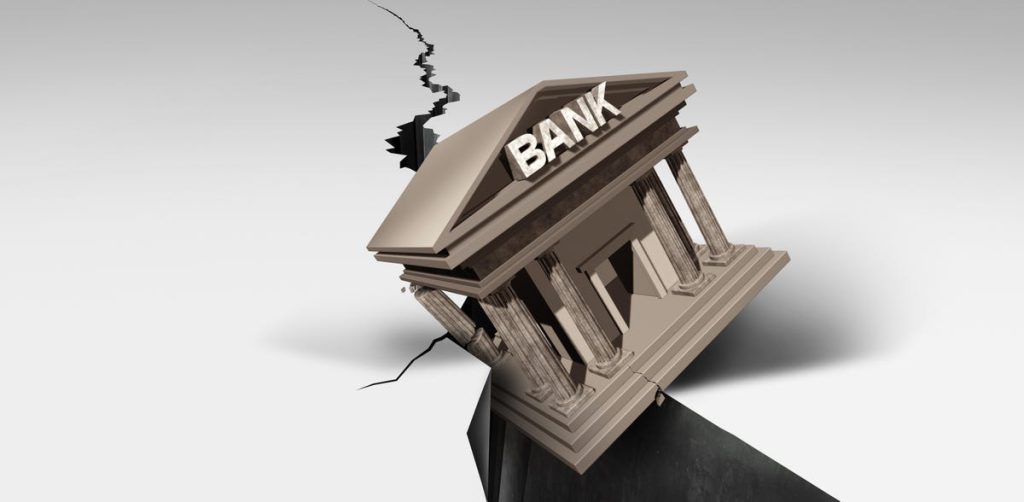The tremors from the loss of confidence in the banking system following the sudden collapse and seizure of Silicon Valley Bank (SIVB
VB
) by the FDIC on March 10 continue to be felt through the financial markets. While analysis shows U.S. banks to be solvent overall, the concern about banks has spread globally. The challenge of analyzing bank safety is that a severe loss of confidence can actually cause an otherwise functioning financial institution to come under duress. Last week’s article began a look at the health of banks using high-frequency data. This week introduces a systematic methodology to monitor the strains on the banking system weekly via the U.S. Banking System Stress Monitor. Aside from the market pricing data and government money market mutual funds asset flows, the bank data come from the Federal Reserve’s H.4.1 and H.8 weekly reports, released on Thursday and Friday, respectively.
The most accessible and frequent data is bank stock prices. Bank stocks have been particularly hard hit, with the KBW Bank index down almost 19% year-to-date. The good news is that large bank prices and stocks generally were higher this week. As measured by the KBW Regional Bank index, smaller bank stocks were essentially flat for the week.
Credit default swap (CDS) prices are less well-known but available in real-time. In simple terms, CDS functions as an insurance policy that investors can purchase that pays off in the event of a borrower’s default. A higher price of a CDS reflects a more significant probability of default of the borrower. CDS prices for four of the U.S.’s global systemically important banks (G-SIBs) remain elevated but have improved significantly from the highest levels of this crisis.
A straightforward way to measure the stress in the U.S. banking system is the magnitude of bank support provided by the Federal Reserve via various facilities. The most common is the discount window, which banks generally avoid, but the facility can provide emergency liquidity. In addition, following the collapse of Silicon Valley Bank, the Federal Reserve announced a new facility to help banks meet withdrawal requests from depositors and restore confidence. The Bank Term Funding Program (BTFP) allows banks to borrow up the face value of any government bonds held in the bank’s portfolio at a very reasonable rate. The Paycheck Protection Program (PPP) facility was created in 2020 to provide support during the pandemic. Other credit is the support of the bridge banks, operated by the Federal Deposit Insurance Corporation (FDIC) until they can be sold or liquidated.
With the seizure of Silicon Valley Bank and Signature Bank, discount window and bridge bank credit usage soared. Last week, the use of the Fed bank facilities was driven by a decline in discount window borrowing. Part of the reduction in discount window usage was likely a shift to borrowing from the BTFP. Overall, this decline in Fed bank lending bodes well that the rapid spread of the banking crisis has been arrested for now.
Overall, bank deposit outflows continued and grew slightly after the large outflow the previous week. Notably, the 25 largest banks, which include many midsize regional banks, lost deposits by $96 billion last week after gaining in the previous week.
The previous week’s deposit outflows from small banks were revised to a whopping $184 billion, but only a small outflow was reported this week.
Cash has continued flowing into government money market funds, which helps confirm that deposits are leaving the banking system. This movement, also known as “cash sorting,” reflects savers reaching for higher yields while avoiding the credit risk at banks. Cash sorting started before the crisis began but seems likely to continue while short-term U.S. Treasury yields are significantly above the interest rates banks pay depositors.
Despite the current crisis, banks continued to make loans. Loan growth will likely slow if banks are forced to hoard extra liquidity to bolster their defenses against possible additional deposit flight and increased loan losses. Smaller banks are the leading provider of commercial real estate loans, so that sector could face less credit availability, but so far, there is no evidence of a decline in lending.
In summary, the U.S. banking system continued stabilizing from the extremes of the crisis. While there are signs, like CDS prices, that confidence is returning in the banking system, the cash sorting activity and elevated uncertainty leave the door open to a return of anxiety about additional bank failures. The deposit outflows from the banks, especially the smaller ones, bear watching closely as more issues could arise if it continues rapidly.
Read the full article here



